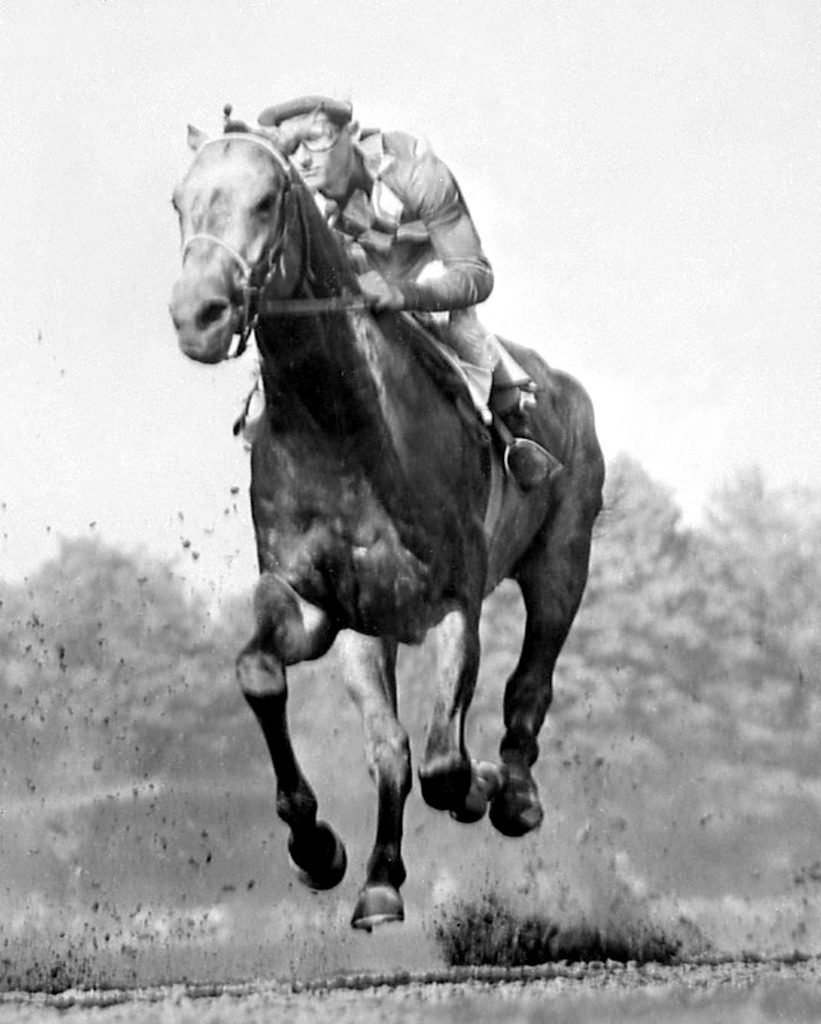
The 1953 Kentucky Derby was supposed to be the coronation of Native Dancer as the king of Thoroughbreds. The gray son of Polynesian was unbeaten in 11 starts, including an amazing nine wins as a 2-year-old. He was running against a crop of 3-year-olds considered mediocre at best, with his only real competition being Correspondent.
The bettors agreed, sending off the “Gray Ghost” at 3-5 odds. Correspondent was second at 2-1. Few paid attention to Dark Star, the Derby Trial winner four days earlier, who was listed as a 24-1 longshot.
Some 40 million viewers watched on television – about 25 percent of the U.S. population – watched the horses in the post parade as small white clouds peppered the beautiful Louisville sky. The temperature was a perfect 80 degrees. All seemed to be in line for Native Dancer to join Citation, Count Fleet and Whirlaway as an immortal in the annals of horse racing.
But then the race started.
It was like bumper cars. Ace Destroyer bumped into Correspondent, who was supposed to set the pace. Dark Star quickly took advantage of the bump and took the early lead. Native Dancer, known for lagging back and using a ferocious kick in the homestretch, was back in the field of 11.
But then Money Broker bumped him hard heading into the clubhouse turn, Jockey Eric Guerin had to pull up Native Dancer and find more running room. He trailed Dark Star by 10 lengths at the half-mile pole. “We got sloughed,” Guerin said later.
Dark Star continued to hold a decent pace and was making a short race of it by running along the rail. He held a 1 1/2 length lead over Correspondent at the three-quarter pole. Meanwhile, Native Dancer began overtaking horses and had moved up to fourth. Heading into the far turn, he passed Straight Face and a tiring Correspondent, whose jockey Eddie Arcaro was trying to get every ounce of energy from his mount.
Once the horses headed into the homestretch, it was a two-horse race. The only question was whether Native Dancer had enough track to catch Dark Star, who still held his 1 1/2 length lead. Slowly – almost too slowly – Native Dancer ate up the ground between him and Dark Star, shortening it to a length, a half a length, a neck. A head.
The finish line ended his surge. Dark Star had upset the field in the Kentucky Derby, beating the superhorse by a head. The crowd was stunned.
Excuses and finger-pointing started immediately. Most pointed toward the bump of Native Dancer at the turn as a reason he had to make up so much ground. Handicappers guessed the Dancer lost about four lengths because of the bump. Some say he was jumping all the long shadows cast by the afternoon sun. Others pointed a finger at Guerin’s ride, saying he didn’t take Native Dancer outside like he usually did on the clubhouse turn, and he waited too long to challenge Dark Star in the stretch.
Guerin blamed the horse, saying, “Native Dancer just didn’t run in the stretch like he can. He didn’t seem to like the track.”
People suddenly turned to their programs to find out who this dark bay colt was who had upset America’s favorite. Dark Star was a relative unknown who had placed third to Native Dancer in the Belmont Futurity but did not place in the Champagne Stakes. The son of Royal Gem had won the Derby Trial by four lengths, but his defeat in the Florida Derby seemed to cast doubt on the horse’s abilities.
Dark Star tried to replicate his Derby success by heading to the front in the Preakness two weeks later, but Guering kept Native Dancer close to the lead, and he managed to defeat Jamie K. by a neck. Dark Star was finished, fading to fifth in the race. One possible reason for his performance was a tendon injury found in his right foreleg, which forced his early retirement. He finished with six wins, two seconds and two thirds in 13 starts.
Native Dancer went on to win the Belmont Stakes and never lost another race, winning 21 of 22 races in his stellar career. But the one that got away was the most painful.
Photo Courtesy of: Keeneland Library Morgan Collection
“This image is protected by copyright and may not be reproduced in print or electronically without written permission of the Keeneland Library.”


